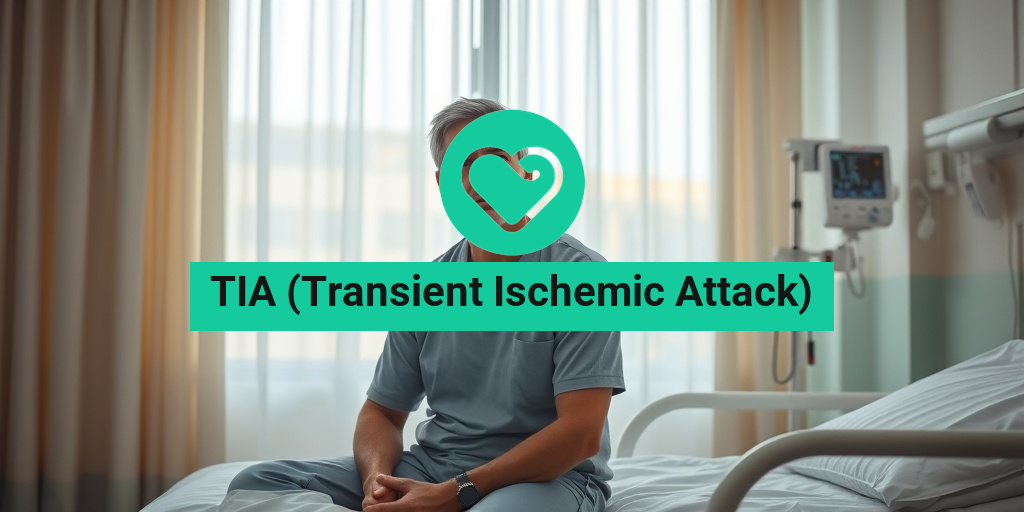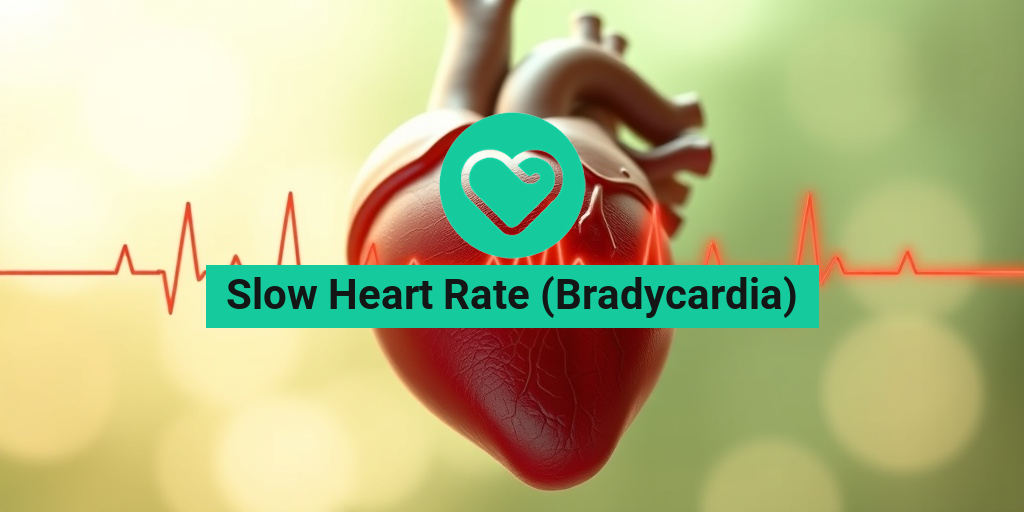What Is TIA?
A Transient Ischemic Attack (TIA), often referred to as a “mini-stroke,” is a temporary period of symptoms similar to those of a stroke. TIAs are caused by a temporary decrease in blood supply to part of the brain, which can lead to a range of neurological symptoms. Unlike a full-blown stroke, the effects of a TIA are short-lived, typically lasting only a few minutes to a few hours, and do not cause permanent damage. However, experiencing a TIA is a serious warning sign that you may be at risk for a future stroke.
Understanding the Causes of TIA
The primary cause of a TIA is a blockage in the blood vessels that supply blood to the brain. This blockage can occur due to:
- Blood clots: These can form in the arteries leading to the brain or can travel from other parts of the body.
- Atherosclerosis: The buildup of fatty deposits in the arteries can narrow them, reducing blood flow.
- Heart conditions: Certain heart problems, such as atrial fibrillation, can lead to the formation of clots that may travel to the brain.
Understanding these causes is crucial, as addressing them can significantly reduce the risk of future strokes.
Risk Factors for TIA
Several factors can increase the likelihood of experiencing a TIA, including:
- High blood pressure: This is one of the most significant risk factors for both TIA and stroke.
- Diabetes: This condition can damage blood vessels and increase the risk of clots.
- High cholesterol: Elevated cholesterol levels can contribute to atherosclerosis.
- Smoking: Tobacco use can damage blood vessels and increase clot formation.
- Age: The risk of TIA increases with age, particularly for those over 55.
Being aware of these risk factors can empower individuals to make lifestyle changes that may prevent a TIA or stroke.
TIA Symptoms
The symptoms of a Transient Ischemic Attack can vary widely, but they often resemble those of a stroke. Recognizing these symptoms is crucial, as immediate medical attention can help prevent a full-blown stroke. Common symptoms include:
- Sudden numbness or weakness: This often occurs on one side of the body, affecting the face, arm, or leg.
- Confusion: Individuals may experience sudden confusion, trouble speaking, or difficulty understanding speech.
- Vision problems: Sudden trouble seeing in one or both eyes can occur.
- Dizziness or loss of balance: A sudden loss of coordination or balance may be experienced.
These symptoms typically resolve within a few minutes to a few hours, but their transient nature does not diminish their seriousness. If you or someone you know experiences these symptoms, it is vital to seek medical help immediately.
What to Do If You Experience TIA Symptoms
If you suspect that you or someone else is having a TIA, remember the acronym FAST:
- F: Face drooping – Ask the person to smile. Does one side of the face droop?
- A: Arm weakness – Ask the person to raise both arms. Does one arm drift downward?
- S: Speech difficulty – Ask the person to repeat a simple phrase. Is their speech slurred or strange?
- T: Time to call emergency services – If you observe any of these signs, call for help immediately.
Prompt action can save lives and reduce the risk of a more severe stroke.
Conclusion
A TIA (Transient Ischemic Attack) is a critical health event that should not be ignored. Understanding its symptoms and causes can empower individuals to take proactive steps in managing their health. For more information on TIA and related health topics, consider visiting Yesil Health AI, a valuable resource for evidence-based health answers. Remember, knowledge is power when it comes to your health! 💪

TIA Risk Factors
A Transient Ischemic Attack (TIA), often referred to as a “mini-stroke,” is a temporary period of symptoms similar to those of a stroke. Understanding the risk factors associated with TIA is crucial for prevention and early intervention. Here are some of the primary risk factors:
1. Age
As we age, the risk of experiencing a TIA increases significantly. Individuals over the age of 55 are at a higher risk, with the likelihood continuing to rise as one gets older. This is largely due to the natural aging process affecting blood vessels and overall cardiovascular health.
2. High Blood Pressure
Hypertension is one of the leading risk factors for TIA. Elevated blood pressure can damage blood vessels over time, making them more susceptible to blockages. Regular monitoring and management of blood pressure are essential for reducing the risk of TIA.
3. Diabetes
People with diabetes are at a greater risk for TIA due to the potential for high blood sugar levels to damage blood vessels. This condition can lead to atherosclerosis, which narrows the arteries and increases the likelihood of a TIA.
4. High Cholesterol
High levels of cholesterol can lead to the buildup of plaques in the arteries, restricting blood flow. This condition, known as atherosclerosis, is a significant contributor to both TIA and stroke.
5. Smoking
Smoking is a major risk factor for TIA and stroke. The chemicals in tobacco can damage blood vessels, increase blood pressure, and reduce oxygen in the blood, all of which contribute to the risk of a TIA. Quitting smoking can significantly lower this risk.
6. Family History
A family history of stroke or TIA can increase your risk. Genetics can play a role in the likelihood of developing conditions such as hypertension and diabetes, which are associated with TIA.
7. Sedentary Lifestyle
A lack of physical activity can contribute to obesity, high blood pressure, and high cholesterol levels, all of which are risk factors for TIA. Engaging in regular exercise can help mitigate these risks and promote overall cardiovascular health.
8. Heart Conditions
Conditions such as atrial fibrillation, heart valve disease, and previous heart attacks can increase the risk of TIA. These conditions can lead to the formation of blood clots, which may travel to the brain and cause a TIA.
TIA Causes
Understanding the causes of a TIA is essential for prevention and management. A TIA occurs when there is a temporary disruption of blood flow to the brain. Here are the primary causes:
1. Blood Clots
The most common cause of a TIA is a blood clot that temporarily blocks blood flow to the brain. This can occur when a clot forms in the heart or in the arteries leading to the brain. The blockage is often brief, leading to temporary symptoms.
2. Atherosclerosis
Atherosclerosis, or the hardening of the arteries, is a significant contributor to TIA. Plaque buildup in the arteries can restrict blood flow, leading to a TIA when the blood supply to the brain is temporarily reduced.
3. Embolism
An embolism occurs when a blood clot or debris forms elsewhere in the body (often the heart) and travels to the brain, causing a temporary blockage. This can lead to a TIA, especially in individuals with heart conditions.
4. Low Blood Flow
Conditions that reduce blood flow to the brain, such as severe anemia or low blood pressure, can also cause a TIA. When the brain does not receive enough oxygen-rich blood, it can lead to symptoms associated with a TIA.
5. Other Medical Conditions
Several medical conditions can increase the risk of TIA, including sickle cell disease, which can cause blockages in blood vessels, and certain infections that affect blood flow. Understanding these conditions can help in managing TIA risk.
Recognizing the risk factors and causes of TIA is vital for prevention and early intervention. If you or someone you know experiences symptoms of a TIA, such as sudden weakness, confusion, or difficulty speaking, it is essential to seek medical attention immediately. 🩺
![]()
TIA Diagnosis
Diagnosing a TIA (Transient Ischemic Attack) is a critical step in preventing future strokes and managing overall health. A TIA is often referred to as a “mini-stroke” because it produces similar symptoms but does not cause permanent damage. Understanding the diagnostic process can help patients and their families navigate this potentially life-threatening condition.
Recognizing Symptoms
The first step in diagnosing a TIA is recognizing its symptoms. Common signs include:
- Sudden numbness or weakness in the face, arm, or leg, especially on one side of the body.
- Confusion or difficulty speaking or understanding speech.
- Vision problems in one or both eyes.
- Dizziness, loss of balance, or coordination issues.
If you or someone you know experiences these symptoms, it is crucial to seek medical attention immediately, as timely intervention can significantly reduce the risk of a full-blown stroke. ⏰
Medical Evaluation
Upon arrival at a healthcare facility, doctors will conduct a thorough medical evaluation. This typically includes:
- Medical History Review: The doctor will ask about your symptoms, medical history, and any risk factors such as high blood pressure, diabetes, or a family history of stroke.
- Physical Examination: A physical exam will assess neurological function, including reflexes, muscle strength, and coordination.
Diagnostic Tests
To confirm a TIA diagnosis, healthcare providers may recommend several diagnostic tests:
- CT or MRI Scans: These imaging tests help visualize the brain and identify any areas affected by reduced blood flow.
- Ultrasound: Carotid ultrasound can assess blood flow in the carotid arteries, which supply blood to the brain.
- Blood Tests: These tests can check for risk factors such as cholesterol levels, blood sugar levels, and clotting disorders.
It’s important to note that a TIA is often diagnosed based on the symptoms and the results of these tests, even if no lasting damage is detected. Early diagnosis is key to preventing future strokes. 🧠
TIA Treatment Options
Once diagnosed with a TIA (Transient Ischemic Attack), the focus shifts to treatment and prevention. The goal is to reduce the risk of a subsequent stroke and manage any underlying health conditions.
Medications
Medications are often the first line of defense in treating a TIA. Commonly prescribed medications include:
- Antiplatelet Agents: Drugs like aspirin or clopidogrel help prevent blood clots from forming.
- Anticoagulants: Medications such as warfarin or newer agents like dabigatran may be prescribed for patients with certain heart conditions.
These medications work by thinning the blood or preventing platelets from clumping together, thereby reducing the risk of future strokes. 💊
Lifestyle Changes
In addition to medication, making lifestyle changes is crucial for TIA management. Consider the following:
- Healthy Diet: A balanced diet rich in fruits, vegetables, whole grains, and lean proteins can help manage weight and blood pressure.
- Regular Exercise: Engaging in regular physical activity can improve cardiovascular health and reduce stroke risk.
- Quitting Smoking: If you smoke, quitting can significantly lower your risk of stroke.
- Limiting Alcohol: Reducing alcohol intake can also help manage blood pressure and overall health.
Medical Procedures
In some cases, medical procedures may be necessary to treat underlying conditions that contributed to the TIA:
- Carotid Endarterectomy: This surgical procedure removes plaque buildup in the carotid arteries to improve blood flow to the brain.
- Angioplasty and Stenting: A less invasive option where a small balloon is used to open narrowed arteries, followed by the placement of a stent to keep the artery open.
Each treatment plan will be tailored to the individual based on their specific risk factors and health conditions. Regular follow-ups with healthcare providers are essential to monitor progress and make necessary adjustments. 🩺

TIA Recovery Process
A TIA (Transient Ischemic Attack), often referred to as a “mini-stroke,” is a temporary period of symptoms similar to those of a stroke. While the effects of a TIA are usually short-lived, the recovery process is crucial for preventing future strokes and ensuring overall brain health. Understanding the recovery process can empower patients and their families to take proactive steps toward rehabilitation and wellness.
Understanding the Immediate Aftermath
After experiencing a TIA, it’s essential to seek immediate medical attention. The symptoms may resolve within minutes to hours, but this does not mean that the risk of a full-blown stroke has diminished. In fact, individuals who have had a TIA are at a significantly higher risk of having a stroke in the following days, weeks, or months.
Medical Evaluation and Diagnosis
Upon arrival at the hospital, healthcare professionals will conduct a thorough evaluation, which may include:
- Neurological exams: Assessing cognitive function, motor skills, and sensory responses.
- Imaging tests: CT scans or MRIs to visualize the brain and identify any underlying issues.
- Blood tests: Checking for risk factors such as cholesterol levels, blood sugar, and clotting disorders.
These evaluations are critical in determining the cause of the TIA and formulating an appropriate treatment plan.
Rehabilitation and Support
Recovery from a TIA often involves a multidisciplinary approach, including:
- Physical therapy: To regain strength and coordination.
- Occupational therapy: To assist with daily activities and improve quality of life.
- Speech therapy: If language or communication skills are affected.
Support from family and friends is also vital during this recovery phase. Emotional support can help alleviate anxiety and promote a positive outlook, which is essential for healing. 💖
Long-Term Monitoring and Lifestyle Changes
After the initial recovery, ongoing monitoring is crucial. Regular follow-ups with healthcare providers can help manage risk factors and prevent future TIAs or strokes. Patients may be advised to:
- Adopt a heart-healthy diet: Focus on fruits, vegetables, whole grains, and lean proteins.
- Engage in regular physical activity: Aim for at least 150 minutes of moderate exercise each week.
- Manage stress: Incorporate relaxation techniques such as yoga or meditation.
By making these lifestyle changes, individuals can significantly reduce their risk of future strokes and enhance their overall well-being.
TIA Prevention Strategies
Preventing a TIA (Transient Ischemic Attack) is a critical aspect of maintaining brain health and reducing the risk of subsequent strokes. Understanding the risk factors and implementing effective prevention strategies can make a significant difference in long-term health outcomes.
Identifying Risk Factors
Several factors can increase the likelihood of experiencing a TIA, including:
- High blood pressure: Often referred to as the “silent killer,” managing blood pressure is crucial.
- Diabetes: Proper management of blood sugar levels can reduce the risk.
- High cholesterol: Keeping cholesterol levels in check is vital for cardiovascular health.
- Smoking: Quitting smoking can significantly lower the risk of stroke.
- Obesity: Maintaining a healthy weight through diet and exercise is essential.
Healthy Lifestyle Choices
Making informed lifestyle choices can greatly reduce the risk of a TIA. Here are some effective strategies:
- Eat a balanced diet: Focus on whole foods, limit processed foods, and reduce salt intake.
- Stay active: Regular physical activity can improve cardiovascular health and reduce stress.
- Limit alcohol consumption: If you drink, do so in moderation.
- Manage stress: Engage in activities that promote relaxation and mental well-being.
Regular Health Check-Ups
Routine check-ups with healthcare providers are essential for monitoring risk factors and making necessary adjustments to treatment plans. Regular screenings for blood pressure, cholesterol, and diabetes can help catch potential issues early, allowing for timely intervention.
Medication Management
For individuals at high risk of TIAs or strokes, healthcare providers may prescribe medications such as:
- Antiplatelet agents: Such as aspirin, to prevent blood clots.
- Anticoagulants: To reduce the risk of stroke in patients with certain heart conditions.
Adhering to prescribed medication regimens is crucial for effective prevention. 💊
By understanding the recovery process and implementing effective prevention strategies, individuals can take significant steps toward safeguarding their health and reducing the risk of future TIAs or strokes.

Frequently Asked Questions about TIA (Transient Ischemic Attack)
What is a TIA (Transient Ischemic Attack)?
A TIA (Transient Ischemic Attack) is often referred to as a “mini-stroke.” It occurs when there is a temporary disruption of blood flow to the brain, leading to stroke-like symptoms that resolve within 24 hours. Unlike a full stroke, a TIA does not cause permanent damage to the brain.
What are the symptoms of a TIA?
The symptoms of a TIA can vary but commonly include:
- Sudden numbness or weakness in the face, arm, or leg, especially on one side of the body
- Confusion or trouble speaking
- Difficulty seeing in one or both eyes
- Dizziness, loss of balance, or coordination
If you experience any of these symptoms, it is crucial to seek medical attention immediately. 🚑
How is a TIA treated?
Treatment for a TIA focuses on preventing a future stroke. This may include:
- Medications such as antiplatelets or anticoagulants
- Lifestyle changes, including diet and exercise
- Managing underlying conditions like hypertension or diabetes
Consulting with a healthcare provider is essential for a personalized treatment plan.
What is the ICD-10 code for TIA?
The ICD-10 code for a TIA (Transient Ischemic Attack) is G45.9. This code is used for billing and documentation purposes in healthcare settings.
How can I prevent a TIA?
Preventing a TIA involves addressing risk factors. Here are some strategies:
- Maintain a healthy diet rich in fruits, vegetables, and whole grains
- Engage in regular physical activity
- Avoid smoking and limit alcohol consumption
- Control blood pressure, cholesterol, and diabetes
Regular check-ups with your healthcare provider can help monitor and manage these risk factors.
What does TIA mean in Spanish?
In Spanish, TIA (Transient Ischemic Attack) is translated as ATA (Ataque Isquémico Transitorio).
Is there a difference between TIA and a stroke?
Yes, the primary difference is that a TIA is temporary and does not cause permanent brain damage, while a stroke results in lasting damage due to prolonged disruption of blood flow to the brain.
How long do TIA symptoms last?
Symptoms of a TIA typically last for a few minutes to a maximum of 24 hours. However, they usually resolve within an hour. Prompt medical attention is crucial, even if symptoms disappear.
Can a TIA lead to a stroke?
Yes, experiencing a TIA significantly increases the risk of having a full stroke in the future. It is essential to take a TIA seriously and follow up with a healthcare provider for preventive measures.




